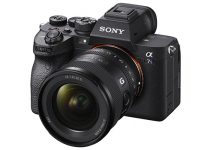Of the many truths regarding filmmaking equipment, one remains certain – high-quality cine lenses are not cheap, and they will never be. For a premium piece of glass with top-notch build quality and all the fancy focusing bells and whistles, expect to pay upwards of a few thousand, or even tens of thousands of dollars for a single lens.
But, why it’s so important to have multiple lenses with different focal lengths anyway? If you’ve already got a wide lens with a low aperture, isn’t that enough for everything?
First of all, using different focal lengths embodies your shot with a different aesthetic that can shape the overall message or tone of your image. Secondly, different focal lengths give the lens varying degrees of compression within the shot. And no, this is not in reference to any warping around the sides of the lens – as those are just qualities of lenses you shouldn’t buy – but rather how your subject’s figure is affected by the lens.
Furthermore, lower focal lengths tend to produce more distorted images, with the composition showing a slight bulging effect from the center of the frame for extremely wide lenses. In contrast, higher focal lengths make the objects in your subject seem closer together. A good example can be found in the test shots in the video, with YCImaging himself posing in front of the camera at varying focal lengths. The differences become quite appaprent especially when you compare the image shot at 24mm and 100mm.
Another factor that should sway you to use different focal lengths in your videos is depth-of-field. Beyond just having a blurred background, the focal length you use will have an effect on how close your foreground is to your subject, which can portray different undertones in your shot.
Take a look at the test shots in the video, for example. With the 100mm, there is more visual compression present, with the background appearing closer to the subject than with the other lenses used. This increase in depth can portray many different emotions, such as belonging or even claustrophobia, if you opt to use lenses with extremely long focal lengths.
On the other hand, the 24mm has the background much farther away from the subject, portraying less depth. This aesthetic can make it seem as if the subject is surrounded or overwhelmed by such an open environment, with the spatial freedom conveying a sense of openness and peace.
Besides factors such as aperture and whether or not a lens will get you the perfect landscape shot, it’s important to remember the significance of using different lenses due to their focal distances.
Whether it be 24mm, 50mm, or 100mm, focal distances affect the relationship between your foreground and background, thus drastically changing the visual aesthetics of your composition. By understanding the effects produced by different types of lenses, you will be able to equip yourself more wisely on set by picking the right lenses that can help you tell your story exactly in the way you see it.
[source: YCImaging]
Disclaimer: As an Amazon Associate partner and participant in B&H and Adorama Affiliate programmes, we earn a small comission from each purchase made through the affiliate links listed above at no additional cost to you.




